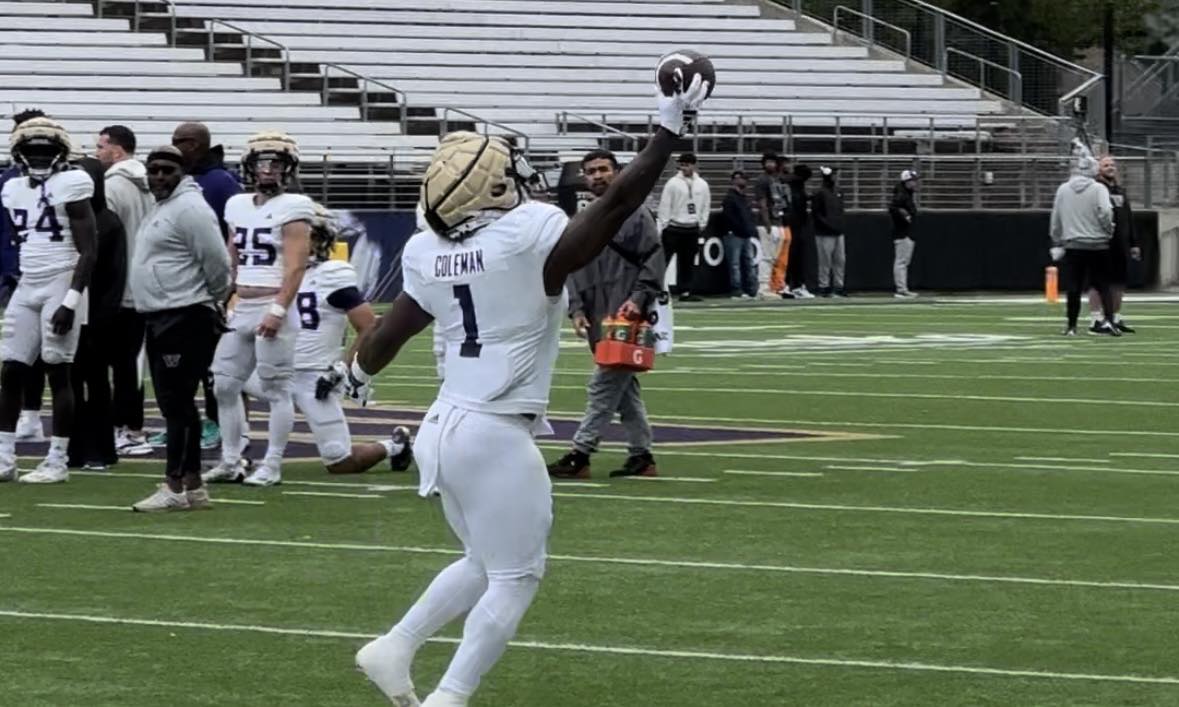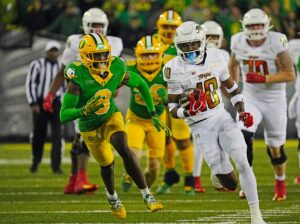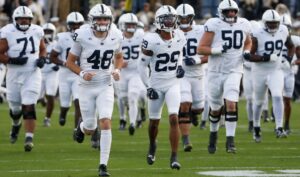Washington’s running game will face a unique challenge this season. It’s an entirely new offense with a new system and lots of new personnel. With that, there are likely to be some growing pains as Jedd Fisch works to win football games this Fall. But at running back, Jonah Coleman has experience. The former Arizona Wildcat has 202 career rushing attempts with over 1,200 yards and nine career touchdowns in two seasons. He averaged a little over six yards per rush over those two seasons in Tucson. Coleman was the first Wildcat to announce he’d follow Fisch and running backs coach Scottie Graham to Washington.
Jonah Coleman’s Running Style
Coleman is listed at 5’-9” and 225 pounds and his running style might remind you of how bowling ball rolls down the lane. The tailback runs with a low center of gravity, making it increasingly difficult for defenders to bring him down. Arm tackles do not get the job done. This Spring, we saw it routinely take multiple tacklers to bring Coleman to the ground. He isn’t afraid of contact and will position himself to out-physical the defender who stands in his way. Coleman uses this momentum to always fall forward, taking defenders with him as he gains that extra yard.
But Coleman is more than just a “ground-and-pound” running back. He is shifty at the point of attack and can find holes in the defensive front to gain positive yards in a hurry. For his low-profile build, he’s light on his feet and can run with explosiveness as well as quickness. During the 11-on-11 sessions this Spring, one of the things that stood out about Coleman’s running style is how well he accelerates to get to the second level. When the hole is there, the Arizona transfer will find it and take advantage. If it isn’t there, he’ll still find a way to gain positive yards with his physicality.
More than once this Spring, we saw Coleman complete a roundoff backflip during practice. It’s a running cartwheel into a backflip, and Fisch said it’s a regular occurrence for the running back. “I’ve seen that backflip 100 times, maybe 200.” Fisch said the gymnastics don’t worry him at all. He jokingly added, “He’s a gymnast at heart.” Coleman’s ability to maneuver through the air like this speaks to his high-level agility and body control as an individual. Washington will have a true athlete in the backfield this fall in Coleman.
Expectations as a Physical Tailback
Coleman’s physical presence as a running back has multiple benefits to this offense. Up front, Washington’s offensive line is a young group that’s played no meaningful snaps together. Opposing defenses are likely to put pressure on Washington’s running game because of this. But Coleman’s running style is tailored to handle such demands. If the running lanes aren’t immediately clear or open, he has a knack for lowering his shoulder and generating his own push. Coleman will create contact. With it, he will drive his legs and create his own space in the face of a defensive front. This physical trait in the backfield will play a big role in generating a prosperous run game this fall for the Huskies.
Coleman’s physicality extends to his work in pass blocking. Pro Football Focus tabbed him with a 72.6 overall pass-blocking rating last season for Arizona. That rating was fifth-best in the Pac-12 Conference last year with a minimum of 10 pass-blocking attempts. He allowed zero sacks and just two quarterback pressures on 67 pass-blocking attempts on the season. His assistance in the blocking scheme will be another critical component of this offense given the question marks at offensive line.






